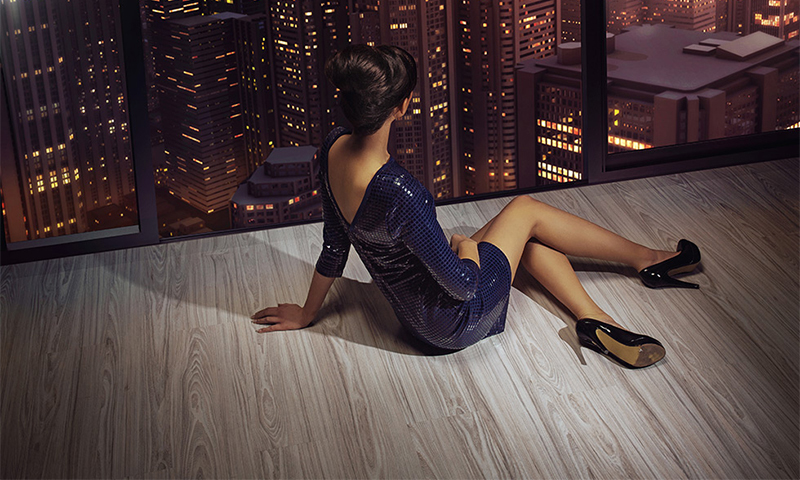Floor tiles are the material of decoration and decoration used to decorate various rooms. It has been popular for many decades, allowing us to give space practicality. The tile is easy to maintain and quite durable. Modern products are used for laying the floor, not only in bathrooms, bathrooms, but also in living rooms, offices, crowded places, as well as on the streets. At the same time, a variety of imitations allows you to create a rather warm atmosphere even in the bedroom. Different tiles in size, shape, design and strength. In our article we will introduce you to the categories of wear resistance, materials of manufacture and many others.

Content:
The best floor tile manufacturers - which company to choose
In the tile market there is not such a large selection of manufacturers as we would like. There are foreign and domestic companies. In foreign brands, the cost of products is much higher, since you have to pay not only for the goods, but also for their transportation. We recommend that you take a closer look at Russian companies, as they are currently in no way inferior to foreign ones, but the prices of their products are much lower.
If you do not have time or desire to delve into the material, then check out the list of the most sought-after brands:
1. Fap Ceramiche
2. Kerama marazzi
3. Cersanit
4. Kerranova
5. Mei
The reviews for the above companies are generally positive, both from ordinary users and from specialists. Companies have the widest assortment, among which everyone, even the most demanding, will be able to choose for himself a suitable floor tile in color, design, and technical characteristics.
For those who are looking for specific models, we suggest you immediately go to our ranking of the best floor tiles.
The principle of operation and the device of floor tiles
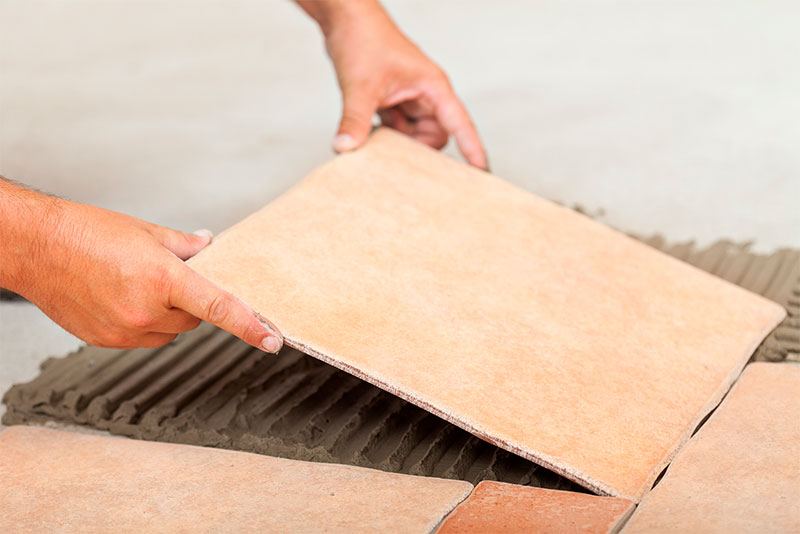
Often, floor tiles are made of ceramics or stones of natural origin. The most common production method is pressing. This method is considered the most technologically advanced.
Do it either glazed or unglazed. Tile is designed to decorate the floor and protect it from external influences. It can be laid out in different ways. It is fixed with glue, which is made of a mixture of cement and sand. Sometimes it is supplemented with a latex additive that adds strength. For greater aesthetics, inter-tile seams are treated with special compositions, grouting. They can be of various colors, suitable for the interior.
Products from a natural stone differ in weight and beauty. But due to the fact that this product is natural and less uniform, it requires careful planning of use and styling. Stone tile can be cut from two sides, and then polished from the outer surface. That is how they get the same thickness.
Some products that have passed through polishing become slippery, such as marble or granite. You need to take this into account if you plan to lay such tiles in rooms with high humidity or where there are elderly people and children.
Types of floor tiles
The first category (rooms with low attendance: bathrooms, bedrooms, etc.)
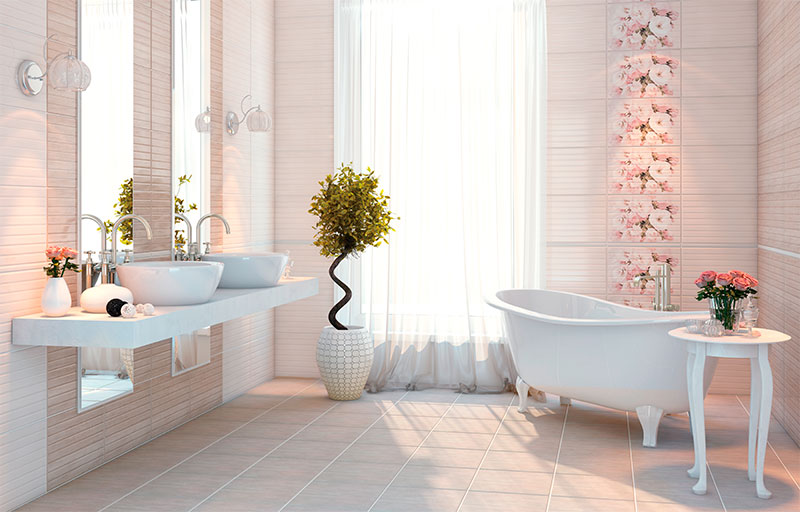
The wear resistance of the first category of floor tiles allows you to use it for laying in places with very little visitation. Usually it is used where there is a slight movement and the wearing of outdoor shoes is excluded. Under these characteristics are bathrooms, bathrooms, bedrooms and other rooms, which are not very often used.
Advantages:
- acceptable cost
- presentable look.
Disadvantages:
- afraid of dirt and sand
- poor protection against mechanical damage and abrasion.
The second category (residential areas with the exception of corridors and kitchens)
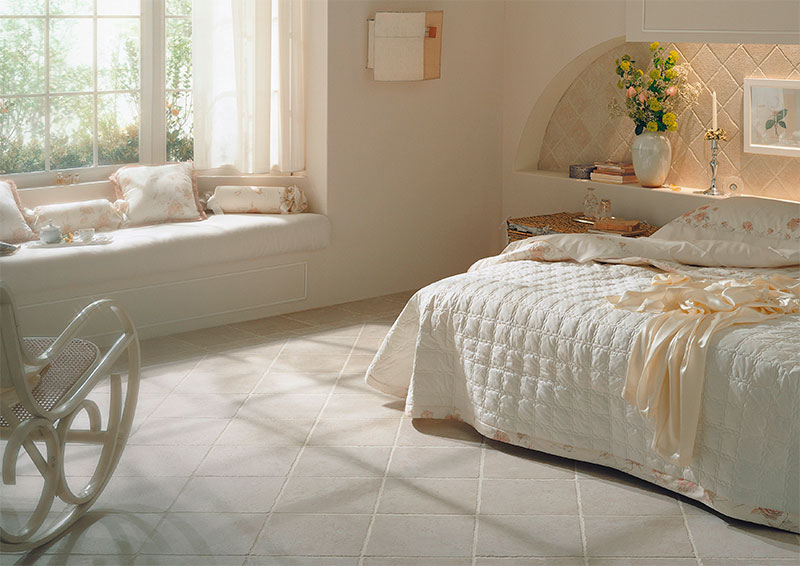
The tile belonging to the second category of wear resistance is intended for residential premises where there are areas with intensive maneuverability. But it is still designed for home, soft shoes. Such products are placed in living rooms, excluding balconies, loggias, stairs, corridors and hallways. Tiles can be used in apartments and private homes.
Advantages:
- long preserves the original state
- wide range of applications
- large selection of design solutions
- inexpensive.
Disadvantages:
- wear out quickly when exposed to outdoor shoes,
- does not have resistance to moisture.
The third category (corridors, loggias, kitchens)
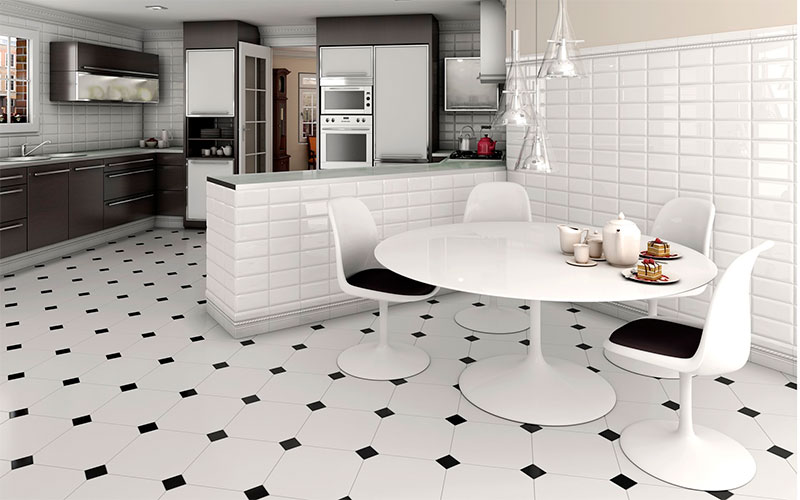
For rooms where the average intensity of passage is suitable tile of the third category. Its durability characteristics make it possible to walk not only in home but also in outdoor shoes. Typically, such products are laid in all living rooms, including in the corridors, on loggias, balconies, attic, kitchens. It is also suitable for hotel lobbies, stairs, registration, dining areas and other things.
Advantages:
- good wear resistance
- high strength
- resistance to abrasion and mechanical damage
- not afraid of moisture, sand and dirt.
Disadvantages:
- not found.
The fourth category (shops, offices, ceremonial, etc.)
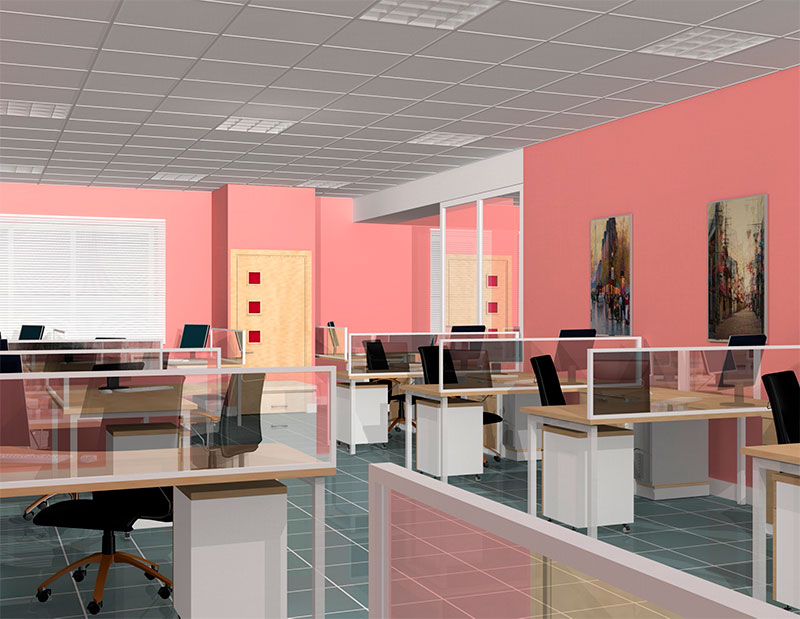
If indoors the intensity of the passage is above average, then the floor tile is subject to greater abrasion, therefore in such places it is necessary to use products of the fourth category. This group is suitable for installation not only in residential premises, but also in public places, such as restaurants, large hotels, small shops, offices, ceremonial, and so on. Especially good to use a similar tile on the stairs, in the halls, on the terraces, etc.
Advantages:
- can withstand high loads
- resistant to various kinds of effects
- long retains a presentable appearance
- frost resistant
- moisture resistant.
Disadvantages:
- cost is above average.
Fifth category (rooms with high attendance: shops, shopping centers, restaurants, etc.)
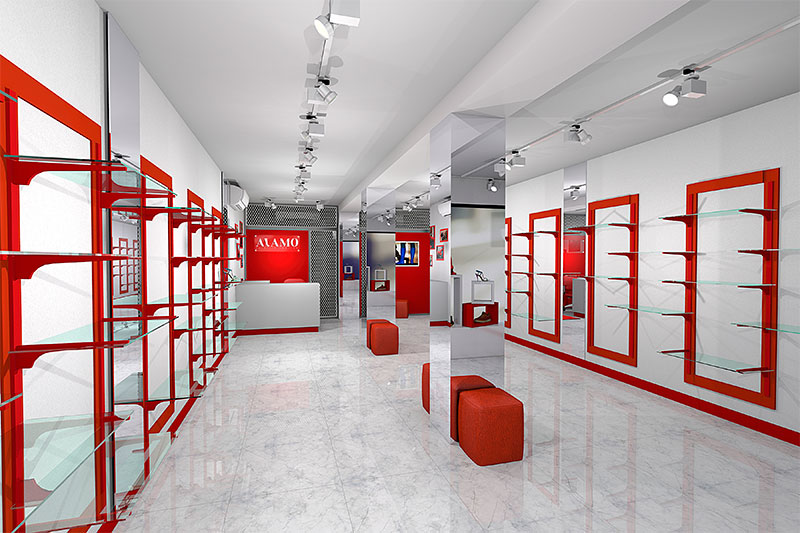
The tile of the fifth category of wear resistance is specially developed for use on those sites where there can be the most intensive movement of people. Products included in this category are significantly different from the fourth class. They are much stronger. The tile is intended for laying in large shopping centers, supermarkets, bars, night clubs, parks, airports, metro stations, railway stations, etc.
Advantages:
- maximum level of wear resistance
- can withstand various weather factors
- resistant to damage of any kind,
- for a long time retains the original look.
Disadvantages:
- high price.
Floor tile selection options
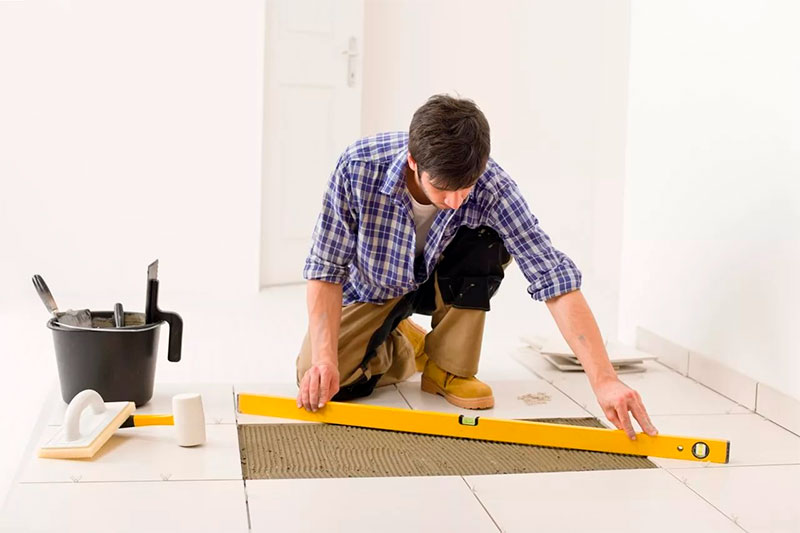
Material
1. Ceramics
The classic tile, which is suitable for any premises, including kitchens, baths, bathrooms. The main thing is to choose the right category. Such products are made of clay. Thin and porous will not be suitable for laying in places with intensive maneuverability.
2. A rock
Very durable tiles with beautiful patterns. Usually it is marble or granite. Used as floor coverings and as cladding. It is resistant to any weather conditions, be it rain, snow, hail, frost or heat. The downside is the high cost of products.
3. Porcelain stoneware
Those who can not afford expensive tiles made of natural stone should buy a variant of ceramic granite. In terms of strength, it is not inferior, not afraid of even open fire. The secret lies in a special method of roasting and adding granite chips. The design allows you to accurately simulate stone tiles.
4. PVC
Cheap and not very durable material with softness and flexibility. The tile from it will be suitable only for use in rooms with small on intensity passability of people.It should be ensured that the surface on which it is planned to lay it was perfectly flat.
5. Concrete
It is easy to prepare a similar tile independently, having mixed sand and cement. It is suitable for laying on street lanes, for example, in a private house. The design of such products is limited, and the view is simple.
6. Bung
Another natural material, although today there are for sale its artificial substitutes. Cork floor tiles will keep warm and silence sounds. Of the minuses worth noting the lack of resistance to moisture and change in appearance during prolonged use.
The size
The size is selected depending on what area. Large plates, for example, 50 to 50 will be able to visually significantly increase and expand the space. But, if the room is less than six square meters, then it is worth choosing a completely different option. Not bad will look on the floor tile of medium size or a special mosaic.
Color and tone
Despite the fact that the choice of this parameter is carried out exclusively by the buyer, there are general recommendations and tips that should be guided:
1. Solid tiles make dust, debris and dirt on your floor more visible, so frequent cleaning is required.
2. A tile with a small pattern or pattern, on the contrary, will make floors visually cleaner. This option will be practical for those who are going to lay the floor tiles in rooms with high traffic.
3. Floor tiles in color should be combined with the general interior. Looks beautiful when the door, wallpaper, curtains echo the floor in style and shades.
4. For dark rooms, it is best to purchase tiles on the floor in light shades to make the room more comfortable.
Marking color
The first grade is marked in red, the second - in blue, and the third - in green.
What floor tile to choose
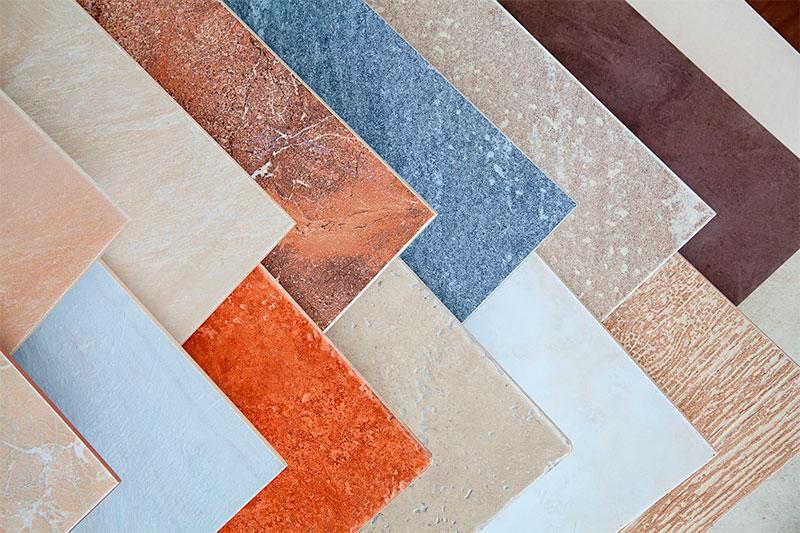
1. The first category of durability is suitable for rooms that are rarely used. Walking on such a tile should only be in a home, soft shoes.
2. The second and third categories are designed for all residential premises. But, if the second must fit into places with a slightly lower maneuverability, then the third can be used on stairs, loggias, balconies, in corridors and hallways.
3. The fourth category is intended for offices, small shops, hotels, that is, those institutions where the permeability is above average.
4. The fifth category will behave perfectly in places with maximum load, for example, in large retail chains, parks, airports, subways and train stations.
5. Ceramic tiles best proven for residential premises.
6. Products from a natural stone and porcelain tile will be suitable for rich furnish of external and internal spaces.
7. Floor tiles made of cork will drown out noises and keep warm.
8. PVC tiles will be an inexpensive flooring option.
9. Concrete plates are well suited for tracks on the territories of private buildings.
10. If the floor tile is purchased for home, then you can choose any color options, but for places with a large passage it is better to prefer a small pattern or pattern. In this case, debris and dust will not be visible.
11. Medium tile fits best into small rooms. Rooms over six square meters can be visually expanded with plates measuring 50 by 50.
How much does a floor tile cost?

1. One square meter of ceramic tiles of the first three categories will cost from 500 to 1 thousand rubles.
2. Floor tiles made of stone will cost from 2 to 10 thousand rubles. per square, depending on the size and brand.
3. A square meter of porcelain stoneware tiles has a slightly cheaper price tag, from 800 to 3 thousand rubles.
4. PVC and concrete tiles are the cheapest, you will have to pay for it from 300 to 700 p.
It will be interesting to friends too




